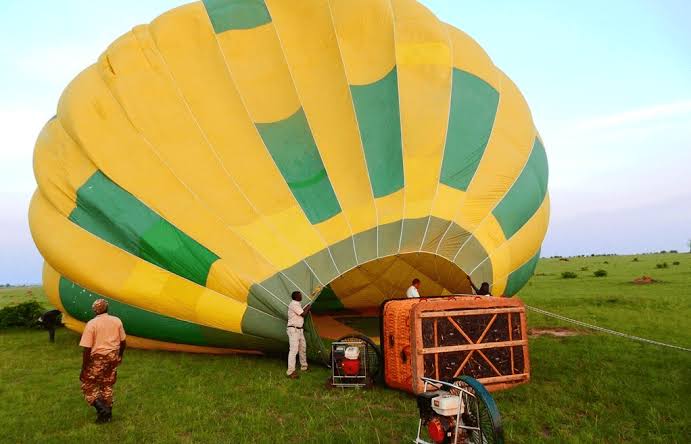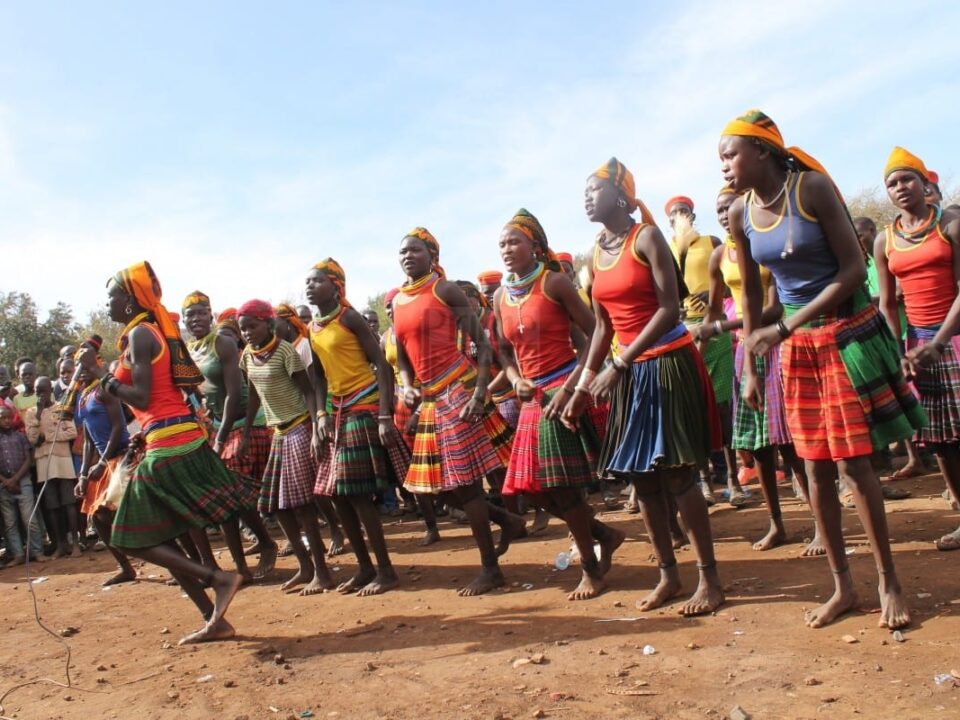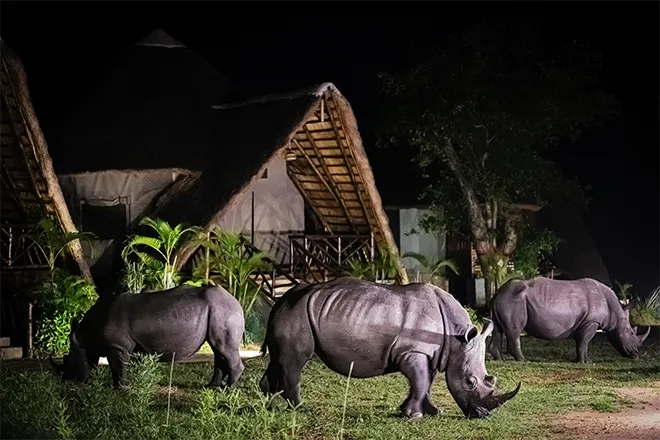- GET IN TOUCH WITH US:
- +256 753518160
- +256 777842166
- info@experiyatourcompany.com

Are night temperatures cold on safari?
November 20, 2025
Do I need a visa to visit Kenya?
November 20, 2025What’s the green season like in the Maasai Mara?

What’s the Green Season Like in the Maasai Mara?
When most travellers think of the Maasai Mara, they imagine the dry, golden plains of migration season—wildebeest thundering across the savannah, dusty sunsets, and lions lounging under acacia trees. Yet there’s another side of the Mara, one that remains a secret to many but cherished deeply by seasoned safari lovers and photographers: the green season. This lush, dramatic, wildlife-rich period transforms the Mara into an emerald paradise. It is a time of rebirth, calm, vibrant beauty, and some of the most breathtaking scenery seen anywhere in Africa.
But what exactly is the green season, and why is it so special? The green season is the period that follows the rains—typically from late November through December, and again from March to May. During these months, the Maasai Mara wakes up from its dry-season tones and becomes a dramatic, refreshing landscape of green grasses, wildflowers, glowing skies, and abundant wildlife. Contrary to popular belief, the green season is not a time when wildlife disappears; in fact, it’s one of the richest, most rewarding times of year for intimate encounters, beautiful photography, and peaceful safaris free from crowds.
This detailed guide explores everything you need to know about the Maasai Mara’s green season—its weather, wildlife behaviour, photographic potential, advantages, challenges, and why this time of year may offer your most memorable safari yet.
What Exactly Is the Green Season?
The green season refers to the rainy periods in the Maasai Mara. There are two primary rainy windows:
Short Rains: November to Early December
Brief, refreshing showers typically in the late afternoon
Warm temperatures, clear mornings
Landscape transforms almost instantly into green
Newborn animals appear everywhere
Long Rains: March to May
Heavier, more consistent showers—often afternoon storms
Mornings still clear and sunny on many days
Longest lasting green period
Most dramatic skies and atmospheric lighting
These rains are not constant downpours. Most days begin bright and fresh, with rain arriving later in the afternoon or evening in spectacular thunderstorms that add cinematic drama to the experience.
The Landscape Transformation: The Mara in Green
During dry months, the Mara’s plains turn golden, dusty, and sparse. But when the rains arrive, the entire reserve undergoes one of the most stunning natural transformations found anywhere in Africa.
Lush Green Plains
The rains trigger explosive grass growth. The savannah turns emerald, scattered with wildflowers. Acacia trees take on fresh leaves, and wetlands refill.
Crystal-Clear Skies
Rains clear the air of dust, revealing deep blue skies and far-reaching horizons.
Dramatic Clouds
Towering storm clouds create powerful contrast and texture—dream conditions for landscape photographers.
Fresh Water Everywhere
Rivers run fuller, pools form across the plains, and wildlife thrives around newly filled marshes.
A Sense of Renewal
Everything feels fresh, vibrant, and alive. The green season is nature’s reset button—lush, peaceful, and deeply rejuvenating to witness.
Wildlife Viewing in the Green Season
Many travellers mistakenly assume wildlife is harder to see in the green season. While vegetation is thicker, the Mara’s wildlife does not migrate away during these months. In fact, wildlife behaviour during the green season can be even more dynamic and fascinating.
The Baby-Boom Season
One of the greatest highlights of the green season is the abundance of young animals. Due to plentiful food and water, many species give birth during or right after the rains.
Expect to see:
Wobbly-legged antelope calves
Newborn zebra foals
Playful warthog piglets
Baby giraffes hiding behind mothers
Lion cubs exploring their surroundings
Cheetah mothers teaching their young
Hyena pups emerging from dens
This explosion of life brings predators into full activity, creating unique interactions rarely seen in the dry season.
Predators in Action
Green season is excellent for predator sightings:
Lion prides are active, taking advantage of inexperienced prey.
Cheetahs thrive in the softer, greener terrain.
Leopards remain territorial and easier to spot in their favourite woodland haunts.
With fewer vehicles around, predators behave more naturally and freely.
Birds in Their Most Colorful Plumage
Migratory species arrive from Europe and Asia, while local species display brilliant breeding colors:
Lilac-breasted rollers glow even brighter against the green
Crowned cranes, secretary birds, and storks thrive in soaked plains
The Mara becomes a birdwatcher’s paradise
Herbivores in Peak Condition
Giraffes, elephants, buffalo, topi, gazelles, and kudu all flourish in the green season:
Water is plentiful
Food is abundant
Stress levels drop
Animals are relaxed and healthy, providing intimate, peaceful sightings that feel deeply connected to nature.
 Advantages of Visiting the Maasai Mara in the Green Season
Advantages of Visiting the Maasai Mara in the Green Season
Fewer Tourists, More Privacy
One of the green season’s most appealing benefits is the dramatic drop in visitor numbers. Popular sightings aren’t crowded, allowing you to enjoy wildlife in quiet, intimate moments.
You may:
Have lion sightings entirely to yourself Experience cheetahs without a caravan of vehicles Watch elephants graze in complete silence Witness sunrise without crowds
Lower Safari Costs
Green season is one of the most affordable times to visit:
Lodge rates drop significantly
Fewer bookings mean better room selection
Private conservancies become more accessible
Travellers seeking luxury at value pricing love this time of year.
Incredible Photography Conditions
Photographers often say the green season is the Mara at its most beautiful:
Soft, diffused light after rains
Dramatic storm clouds
Saturated colors
Reflections in water pools
Mist rising from grasslands in early mornings
Rainbows after passing showers
Green season photography is atmospheric, rich, emotive, and different from the classic dry-season look.
A Peaceful, Slow, Immersive Safari
With fewer crowds, softer light, and relaxed wildlife, green season safaris feel:
Calmer
More meditative
More immersive
Ideal for travellers who want nature without the rush or frenzy of peak migration season.
Challenges of the Green Season (And Why They’re Manageable)
Thicker Vegetation
Long grasses can make spotting cats harder. But:
Experienced guides know where predators hide off-season
Cats still use riverbanks, termite mounds, and tracks
Breakfasting lions are easier on cool mornings
Rain and Mud
Yes, it rains—especially in March–May. Roads can get muddy. But:
Safari vehicles are designed for these conditions
Guides adjust timings around the rain
Most storms happen late afternoon or night
No Great Migration Crossings
The famous river crossings occur July–October. But wildlife is still incredibly abundant. Green season offers a different kind of magic—not less, just different.
The Green Season in the Conservancies
Private conservancies border the Maasai Mara National Reserve and offer even greater advantages in green season:
Off-road driving allowed
Night game drives
Walking safaris
Fewer vehicles
Exclusive sightings
Rich wildlife populations
Conservancies like Naboisho, Olare Motorogi, and Mara North may be even more rewarding during green season than peak season.
Who Will Love the Green Season?
The green season is ideal for:
Photographers
Repeat safari travellers
Wildlife lovers seeking intimate encounters
Budget-conscious travellers
Birdwatchers
Couples seeking peace and privacy
Families avoiding crowds
Travellers who love dramatic landscapes and moodier skies
Who Might Prefer Dry Season?
Travellers wanting:
Guaranteed easy sightings
Classic golden-savana scenery
The Great Migration
Minimal rain
May prefer the dry months from June to October.
Final Thoughts: The Green Season’s Quiet Magic
The green season in the Maasai Mara is one of Africa’s best-kept safari secrets. It is a time of:
Rebirth
Color
Drama
Peace
Abundant wildlife
Atmospheric beauty
If you want a safari that feels wild, raw, intimate, and breathtakingly scenic, the green season delivers an unforgettable experience. It is Kenya’s landscape at its most alive and emotionally powerful.
Book Your Green Season Safari with Experiya Tour Company
For travellers seeking to explore the Maasai Mara during the magical green season, Experiya Tour Company offers expertly crafted itineraries that maximize wildlife sightings, photography opportunities, and unique green-season advantages. Their experienced guides understand animal behaviour during rainy months, know the safest and most rewarding routes, and ensure every moment of your safari is comfortable, scenic, and unforgettable. When planning a green-season adventure in Kenya’s iconic Mara, trust Experiya Tour Company to design a journey filled with beauty, insight, and exceptional care.



